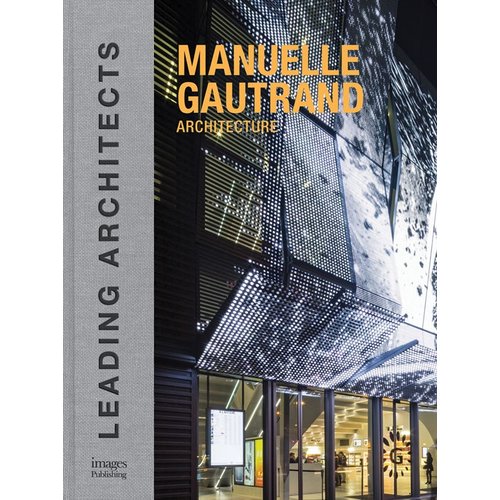Architects have many avenues by which to do good, such as providing pro-bono services to nonprofits and mentoring young designers. Some firms have set up their own private foundations, primarily as a way of influencing design education.
Established in 1979, the SOM Foundation is the oldest-known private foundation created by an architecture firm, and it has distributed almost $2 million in travel and research fellowships to students and recent graduates. From the outset, the mission of the foundation was to improve American design education, explains firm partner Mustafa Abadan, who today chairs the 501(c)(3). “This is a purely philanthropic gesture. A firm is not entirely based on profit motive.”
According to the Foundation Center, a New York-based information service, a private foundation is a self-managed nonprofit that serves the public good using a principal fund or endowment. The SOM (Skidmore, Owings & Merrill) Foundation exemplifies what is known as a corporate foundation. This kind of private foundation receives “funds from their parent companies, although they are legally separate entities,” as the Foundation Center describes the classification. (Other types of foundations include private operating foundations and individual or family foundations.)
When Abadan took over SOM's foundation in 2006, he directed an overhaul of its travel fellowships, with a $50,000 SOM Prize in Architecture, Design and Urban Design and a $20,000 runner-up travel fellowship largely replacing a series of smaller travel grants. Awarding fewer but bigger prizes meant that more money could be shifted into direct action, Abadan explains, adding that the decision “elevated” the SOM Foundation's work over other travel fellowships being established at the time. The award allows recipients to “delve more deeply into a subject and gives our program a public face.” Indeed, fellows' research is all publicly accessible through SOM's archive.
In 2014, MIT graduate Erioseto Hendranata received the SOM Prize to study resilience on three continents, while Harvard GSD alumnus Max Wong earned the $20,000 travel grant to analyze the pros and cons of open-plan interiors. Graduating students of architecture, design, urban design, and structural engineering, of any nationality or previous work experience, are eligible to apply. Applicants submit a portfolio, research proposal, and travel itinerary for review by a jury of between three and five professionals from inside SOM and without.
While the SOM Foundation's giving strategy may have been influenced by wider industry trends, it operates independently, legally and financially. As a tax-exempt organization, it must file a version of the Form 990 with the IRS. In the fiscal year ending in August 2014, the SOM Foundation had almost $3.9 million in assets. Abadan says its endowment largely comprises funds from SOM's 1995 sale of the landmark Charnley House in Chicago to the Society of Architectural Historians. Also included in that figure is $55,000 in charitable contributions, including donations from SOM partners, schools, and other entities like the Wood Products Council, as well as honoraria from staff speaking engagements.
As Abadan observed, a number of other architecture firms have now launched similar foundations. Kohn Pedersen Fox (KPF) hatched its eponymous foundation in 2006 with its own traveling fellowship. Three grants are awarded to undergraduate and graduate students nearing completion of their studies at one of 26 schools. These prizes are distributed as an initial $8,000 to fund summer travel, with another $2,000 delivered after fellows turn in their research. All candidates submit a portfolio and a travel itinerary with statement of intent to five jurors, three of whom work outside KPF.
The fellowships are not the only initiative of the KPF Foundation. According to the group's most recent IRS filing, it has a more expansive scope. In 2013, the foundation distributed more than $325,000, and the largest donations reflect its deep alignment with the profession and with New York—its home base. City institutions such as the Center for Architecture, the Architectural League of New York, and Lincoln Center for the Performing Arts each received gifts topping $20,000.
Other foundations have similarly diversified giving strategies. The David M. Schwarz Architects Charitable Foundation, the philanthropic arm of the Washington, D.C.-based firm David M. Schwarz Architects, distributed almost $180,000 among numerous recipients in the fiscal year that ended in September 2014, according to its federal tax documents. These included the American Academy in Rome, a local support organization for the terminally ill, the Corcoran Gallery of Art, and two smart-growth groups. The foundation took in an additional $100,000 in revenue, and its year-end fair market value of assets approached half a million dollars. Although a schedule of contributors was not linked to the foundation's latest IRS form, David M. Schwarz, firm president and CEO, explains, “While contributions from the firm go up and down, the giving of the foundation stays pretty constant. We did not want this charitable work to be measured by firm profitability.”
The foundation also conducts a travel fellowship program. Through Yale and the universities of Notre Dame and Maryland, the foundation funds four $5,000 and $10,000 travel grants for undergraduate and graduate students nearing completion of their studies. It sends additional money to Yale for an annual commencement prize, also intended for travel and research.
The program resembles KPF's in its application procedures, award amounts, and ex-post-facto documentation requirements—with two key differences. Grantees of the David M. Schwarz Architects Internship & Traveling Fellowship perform two-month summer internships in Schwarz's design studio, in addition to their travel. The fellowship also has a “polemical point” in promoting research into the traditional built environment, which, as Schwarz says, “is a nice way of saying you have to know your architectural history if you want to be an architect.”
Legal and administrative duties associated with a foundation extend beyond financial disclosure. “There's a Chinese wall of sorts,” Schwarz notes. “You can spend no money on the foundation that benefits the firm.” To that end, interviewees all pointed out that their fellowship programs are not tools for recruiting permanent hires. “We have to make a very clear separation,” SOM's Abadan explains. “There's an impartial jury, submissions are anonymous, and in no way can the firm solicit selectees for any favors. Now, after their research is over, people may approach SOM for a job, which is okay, because it's coming from them and not from us.” Sources at SOM, KPF, and David M. Schwarz Architects say that only a handful of former fellows have become employees.
Some architecture firms decide to craft fellowship programs without creating foundations, which reduces some administrative burden. NBBJ has funded its traveling fellowship since 1989 from corporate overhead, reports the firm's director of communications Helen Dimoff, who cochairs the program with consulting principal Christian Carlson. Here recipients are firm employees, each of whom receives a two-week travel opportunity. Starting this year, a service component will be layered into the program, according to Dimoff.
Meanwhile, funding for Robert A.M. Stern Architects' two-year-old RAMSA Travel Fellowship comes directly from the namesake firm's coffers. This $10,000 prize also has a polemical intent, as it goes to a master's student in his or her penultimate year at any one of 16 schools to research “the perpetuation of tradition through invention,” as the fellowship's call for proposals states. In 2013, University of Pennsylvania student Jonathan Dessi-Olive demonstrated timbrel tile vaulting on Mfangano Island, Kenya, and last year McGill's Anna Anatropova catalogued Japanese wood joinery. While the firm is under no obligation to do so, RAMSA partner Melissa DelVecchio, who runs the fellowship program, says its operation is very similar to a foundation model. Talent acquisition is not its goal, and staffers do not reap any reward from the fellowships other than to have their curiosity stoked by new research.
In an alternative strategy, architects sometimes affiliate with family foundations, which allow the firm to expand its scope of activity even more. Since its founding in 1997, for example, the John McAslan Family Trust, based in the UK, has conducted more than a dozen projects: it has organized a design competition to expand London's New Horizon Youth Centre, funded young architects' fieldwork, and, on more than one occasion, spearheaded renovation projects that were then designed by London-based John McAslan + Partners. These include the Roundhouse, a performing-arts center in London, as well as the Iron Market, a historic Port-au-Prince landmark that reopened a year after the 2010 Haiti earthquake. Similarly, in recent years, Tsao & McKown cofounder Calvin Tsao has been channeling the Brooklyn firm's pro bono design services into projects supported by the Tsao Foundation, which his family founded in Singapore in 1993 to focus on human longevity and successful aging. So far, the effort has yielded the first phase of a retirement compound for Bhutanese monks.
Albeit burdened by the strict rules governing nonprofits, architects who set up their own foundations don't regret their decisions. The satisfaction they derive from the effort is as much charitable as creative. “Our buildings are all about making life better for people,” Schwarz says of his firm, so its foundation's altruism simply underscores that philosophy. “But,” he notes, “our good deeds also provide windows on the world. Through this work, we expose ourselves to fresh perspectives, and we learn more.”
For more information, read our full list of fellowships and scholarships for students and young designers.
Back to Architecture and Money


 To earn one AIA learning unit (LU) read the stories listed below and
To earn one AIA learning unit (LU) read the stories listed below and 





